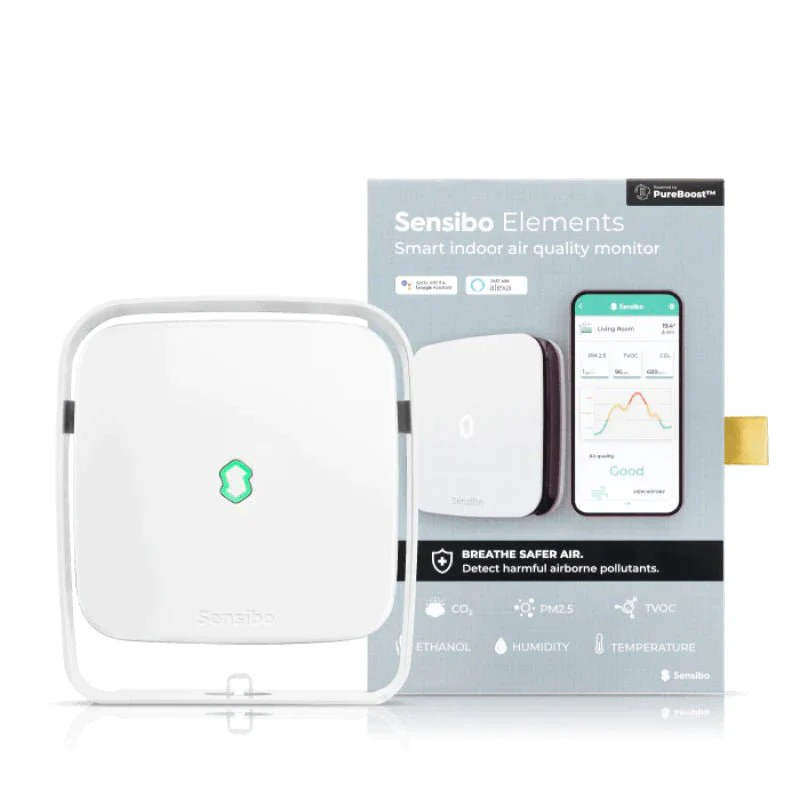More than 65 million Americans suffer from asthma and/or allergies. That is, by no means, a small portion of the population. May marks National Asthma and Allergy Awareness Month. First celebrated in 1984, the Asthma and Allergy Foundation of America (AAFA) designated the awareness month to generate more recognition for the illnesses. This year, AAFA is offering 31 days of action for the 31 days of May. That’s 31 different ways to get involved, take action and learn more about these chronic conditions.
Allergies and asthma are, however, certainly not limited to the month of May. And contrary to what some may believe, allergies are not confined to springtime either. Even hay fever (the common allergic response to airborne substances) is a year-round condition for some.
Whether you or a loved one suffers from asthma or allergies, it’s important to be proactive. Reducing exposure to potential triggers is the key. Though you cannot clear outdoor environments of triggers, you do have control over your indoor environment. Here’s why focusing on indoor air quality matters for asthma and allergy patients.
Overview of the Conditions
In order to understand how indoor air quality affects asthma and allergy conditions, an overview is important. We do not profess to be medical experts and these descriptions are not meant to be fully exhaustive explanations. Here’s a quick overview.
Asthma
Asthma causes airways to swell and constrict in response to triggers. This results in smaller airways, excess production of mucus and less air movement overall. In turn, leading to symptoms such as shortness of breath, wheezing, coughing, chest tightness and more. This process occurs when allergens or other irritants enter the lungs. Asthma attacks range in seriousness, just like asthma conditions range from occasional to persistent symptoms.
Asthma is one of the most common diseases in America. 25 million Americans suffer from the condition. (That’s roughly 1 in 13!) It is also the leading chronic disease among children. On average, 10 Americans die from asthma every day. There is no cure for asthma, but the disease and symptoms can be managed.
Allergies
An allergy is simply a reaction to an allergen. Allergy symptoms are the result of the immune system fighting back against a foreign substance. These symptoms include coughing, sneezing, trouble breathing, eyes/ear/throat irritation and hives, to name a few.
There are several types of possible allergies–such as food, drug, insect or skin allergies. That’s in addition to common airborne allergens, which can be in response to both indoor and outdoor sources. More than 50 million Americans experience some kind of allergies every year. And, those who suffer from one type of allergy, are likely to suffer from multiple allergies.
Asthma And Allergy Awareness Month 2021
It’s true that the spring and summer months are a particularly difficult time for allergy and asthma patients. This is due to higher pollen levels (AKA more allergens indoors and out). This is part of why May is the ideal month to focus on increasing public asthma and allergy awareness. The month also features World Asthma Day, Air Quality Awareness Week and Clean Air Month. It’s a fest of air quality attention and information.
To spread awareness, the AAFA also releases its annual report “Asthma Capitals,” listing the most challenging American cities to live in for asthmatics. The research focuses on three specific factors and compares measurements across the nation’s 100 largest cities. “Asthma Capitals” evaluates asthma prevalence, the number of ER visits due to asthma and the number of asthma deaths in each city. Allentown, Pennsylvania is 2021’s unwished-for winner.
Part of the report’s significance is that the research emphasizes several environmental factors as asthma and allergy contributors. These factors contribute to development of the conditions, symptoms and overall disease severity. The eight risk factors identified are:
- Poverty
- Lack of health insurance
- Air pollution in the region
- Pollen count
- Use of long-term asthma controller medicine
- Use of quick-relief medicine
- Smoke-free laws
- Access to asthma specialists
Why Are Asthma And Allergies IAQ Concerns?
1. Symptoms And Severity Are Based On Environmental Factors
More than likely you can make a couple quick associations between indoor air quality and some of the factors listed above. Likely local air pollution, local air quality conditions and pollen levels to name a few. While each factor may not directly worsen indoor air quality, every aspect does contribute to one’s indoor environment. Here are a couple examples. For someone living in a building or neighborhood where smoke-free rules are poorly enforced, clean indoor air is crucial. Avoiding known triggers and indoor contaminants is more significant for a patient that lacks health insurance.
Asthma and allergies are IAQ concerns because the severity of these conditions depends on environmental factors, are affected by indoor environmental factors. The Asthma Capitals report focuses on that very fact. The conditions and location of where one lives contributes to their symptoms and disease severity.
Home locale as a factor results in other noticeable impacts. The AAFA found that asthma rates differ among ethnic and racial groups. Across the nation, Black Americans are most likely to have asthma. Black children are three times as likely to develop asthma than white children. And, Black Americans are three times as likely to die from asthma and five times more likely to go to the hospital due to their asthma condition. Part of the reason for such a difference in asthma frequency is because of the role surrounding air quality and nearby top air pollutants plays in respiratory health.
Asthma and allergies are largely dependent on environmental factors. For Asthma and Allergy Awareness Month, there are two main options. Advocacy and education helps address outdoor environmental concerns. Mitigation strategies and home indoor air quality control solutions helps create a healthier indoor environment.
2. There Is No Cure
Not only is there no cure for asthma and allergies, they are chronic conditions. This means symptoms are recurring, or persist for a long time. With no cure, focus instead turns to management and treatment. When it comes to indoor spaces, that means focusing on prevention and mitigation. This looks like controlling allergens, irritants, contaminants and pollutants. Managing indoor triggers and indoor sources becomes a top priority.
3. Air Pollutants Are Triggers
Hopefully this part is obvious, but let’s really hammer home the point. Contaminants and allergens that enters the lungs, triggers attacks and symptoms. The key asthma and allergy awareness takeaway: indoor air contaminants are sources that further harm asthma and allergy sufferers! The following is a non-exhaustive list of air pollutants that exacerbate symptoms:
- Dust and Dust Mites
- Secondhand Smoke
- Molds and Mildew
- Cockroaches and Pests
- Indoor Pesticides
- Nitrogen Dioxide
- Chemical Irritants
- Wood Smoke
Clear Your Home of Asthma and Allergy Triggers
The good news is that any IAQ control solution will help reduce the number of indoor air pollutants. To choose the best strategy for your home, start to notice what particularly worsens symptoms in your living spaces. Also consider consulting your doctor or an experienced HVAC/IAQ professional who can help determine the best home upgrade.
For example, if dust is a prevalent issue, consider whole-home humidity control or whole-home purification. It’s necessary to regulate indoor humidity levels because dust mites and other biological organisms thrive, grow and spread in high humidity conditions. A whole-home active air purifier targets contaminants and surfaces, minimizing the amount of dust indoors. If you can pinpoint your allergies as seasonal hay fever, a mechanical ventilation system will filter incoming fresh air, reducing the impact outdoor air quality has indoors. Mechanical ventilation also limits the need to open windows and doors for better circulation, further reducing chances of pollen infiltrating indoors.
If a whole-home upgrade isn’t the best option for you (or at least not yet), source control is another helpful method. It also looks like a lot of different solutions, such as choosing less toxic and less-fragranced cleaning products or leaving shoes outdoors.
Healthy Indoors
Indoor air quality impacts asthma and allergies. Intervening in your home, the spaces you live and work in daily, can and will help alleviate symptoms. This Asthma and Allergy Awareness Month, choose to take charge of the air you breathe indoors.





